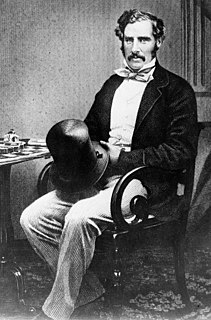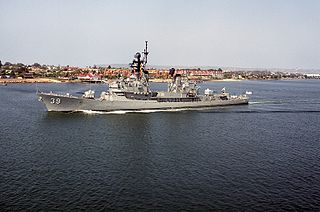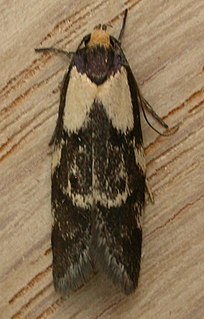
The kangaroo is a marsupial from the family Macropodidae. In common use the term is used to describe the largest species from this family, the red kangaroo, as well as the antilopine kangaroo, eastern grey kangaroo, and western grey kangaroo. Kangaroos are indigenous to Australia and New Guinea. The Australian government estimates that 42.8 million kangaroos lived within the commercial harvest areas of Australia in 2019, down from 53.2 million in 2013.

The eastern grey kangaroo is a marsupial found in the eastern third of Australia, with a population of several million. It is also known as the great grey kangaroo and the forester kangaroo. Although a big eastern grey male typically weighs around 66 kg (146 lb) and stands almost 2 m tall, the scientific name, Macropus giganteus, is misleading: the red kangaroo of the semi-arid inland is larger, weighing up to 90 kg (200 lb).

The western grey kangaroo, also referred to as a western grey giant kangaroo, black-faced kangaroo, mallee kangaroo, and sooty kangaroo, is a large and very common kangaroo found across almost the entire southern part of Australia, from just south of Shark Bay through coastal Western Australia and South Australia, into western Victoria, and in the entire Murray–Darling basin in New South Wales and Queensland.

Sir George Grey, KCB was a British soldier, explorer, colonial administrator and writer. He served in a succession of governing positions: Governor of South Australia, twice Governor of New Zealand, Governor of Cape Colony, and the 11th premier of New Zealand.

The cockatiel, also known as weiro bird, or quarrion, is a small parrot that is a member of its own branch of the cockatoo family endemic to Australia. They are prized as household pets and companion parrots throughout the world and are relatively easy to breed. As a caged bird, cockatiels are second in popularity only to the budgerigar.

The Australian Army Reserve is a collective name given to the reserve units of the Australian Army. Since the Federation of Australia in 1901, the reserve military force has been known by many names, including the Citizens Forces, the Citizen Military Forces, the Militia and, unofficially, the Australian Military Forces. In 1980, however, the current name—Australian Army Reserve—was officially adopted, and it now consists of a number of components based around the level of commitment and training obligation that its members are required to meet.

HMAS Hobart was a Perth-class guided missile destroyer of the Royal Australian Navy (RAN). Built in the United States of America to a slight variant of the United States Navy (USN) Charles F. Adams class, she was commissioned into the RAN in 1965. In March 1967, Hobart became the first RAN combat ship deployed to fight in the Vietnam War. This marked the start of consistent six-month deployments to the warzone, which continued until late 1971; Hobart was redeployed in 1969 and 1970. During the 1968 tour, the destroyer was attacked by a United States Air Force aircraft.

The Division of Grey is an Australian electoral division in South Australia. The division was one of the seven established when the former Division of South Australia was redistributed on 2 October 1903 and is named for Sir George Grey, who was Governor of South Australia from 1841 to 1845.

HMAS Perth was the lead ship of the Perth-class guided missile destroyers operated by the Royal Australian Navy (RAN). Built in the United States to a modified version of the Charles F. Adams design, Perth entered service with the RAN in 1965.

The Stenomatinae are a subfamily of small moths in the family Depressariidae.

Phylomictis is a moth genus of the family Depressariidae.
Phylomictis decretoria is a moth in the family Depressariidae. It was described by Thomas Pennington Lucas in 1900. It is found in Australia, where it has been recorded from Queensland.
Phylomictis idiotricha is a moth in the family Depressariidae. It was described by Edward Meyrick in 1921. It is found in Australia, where it has been recorded from Queensland.
Phylomictis leucopelta is a moth in the family Depressariidae. It was described by Oswald Bertram Lower in 1902. It is found in Australia, where it has been recorded from South Australia.
Phylomictis lintearia is a moth in the family Depressariidae. It was described by Edward Meyrick in 1921. It is found in Australia, where it has been recorded from Queensland and New South Wales.

Phylomictis maligna is a moth in the family Depressariidae. It was described by Edward Meyrick in 1890. It is found in Australia, where it has been recorded from Victoria.
Phylomictis monochroma is a moth in the family Depressariidae. It was described by Oswald Bertram Lower in 1892. It is found in Australia, where it has been recorded from South Australia.
Phylomictis palaeomorpha is a moth in the family Depressariidae. It was described by Alfred Jefferis Turner in 1898. It is found in Australia, where it has been recorded from Queensland.
Phylomictis sarcinopa is a moth in the family Depressariidae. It was described by Edward Meyrick in 1920. It is found in Australia, where it has been recorded from Queensland.

Jeffrey Guy Grey was an Australian military historian. He wrote two volumes of The Official History of Australia's Involvement in Southeast Asian Conflicts 1948–1975, and several other high-profile works on Australia's military history. He was the first non-American to become the president of the Society for Military History, but is perhaps best known as the author of A Military History of Australia.












